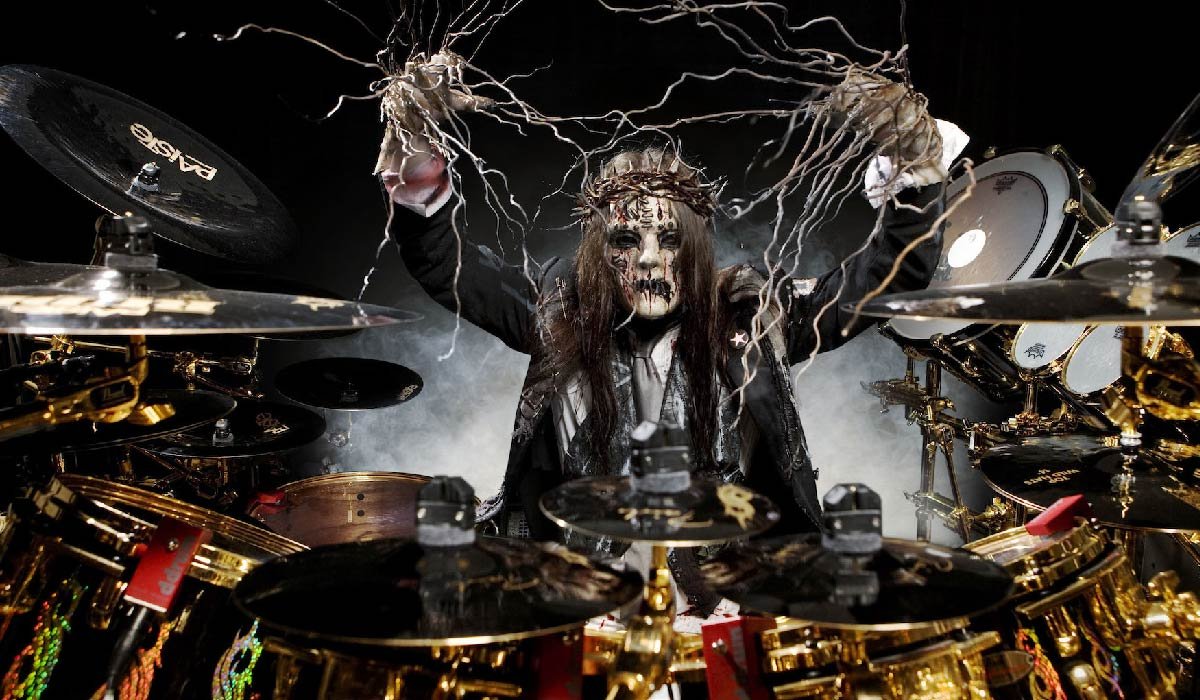Introduction
In today’s ever-evolving world of electronic music, a new sound is emerging from the depths of the underground—a genre that blends precision, chaos, emotion, and raw creativity. This genre is StufferDNB, a richly layered and experimental style of Drum and Bass (DNB) that is redefining what the genre can be in 2025. Unlike traditional DNB, which often centers around high energy and dancefloor appeal, stufferdnb goes deeper. It’s dense, atmospheric, and built for those who crave complexity in their music.
Think of it as DNB’s introspective, artistic sibling. Whether you’re listening on high-fidelity headphones or at a packed warehouse rave, the sound immerses you with textures that move, shift, and evolve across every second. In this article, we’ll explore everything about stufferdnb—its origins, core characteristics, production techniques, artists to watch, cultural impact, and future potential. If you’re a fan of electronic music that challenges conventions and celebrates creativity, this is the deep dive you’ve been waiting for.
What is StufferDNB? A Deep Dive into the Genre’s Identity
At its core, stufferdnb is a subgenre of Drum and Bass known for its intricate layering, deep basslines, and rich soundscapes. The name “StufferDNB” reflects its defining trait: audio compositions stuffed with detail. Unlike cleaner DNB subgenres like Liquid or Jump-Up, StufferDNB is not afraid to be noisy, chaotic, and experimental—but with intention. It borrows the tight drum programming of Neurofunk, the emotional ambiance of Liquid, and the abstract influence of Ambient and IDM to form a sound that is both aggressive and meditative.
Every element—drums, bass, atmospheres, vocals, textures—is carefully layered, often with dozens of subtle variations per bar. In terms of musical identity, stufferdnb is a place where sound design becomes art, and where the boundaries between genres begin to dissolve. This genre offers more than a groove—it offers a sonic world.
The History and Evolution of StufferDNB: From Jungle to Today’s Underground Movement
To truly understand stufferdnb, we must travel back to the roots of Drum and Bass in the early 1990s. The UK jungle scene, which emerged from reggae, dancehall, and hip-hop, laid the foundation for what would eventually evolve into DNB. Fast breakbeats, deep bass, and a rebellious energy defined the early years. As production technology advanced in the 2000s, record labels like RAM Records and Hospital Records brought cleaner, more structured sounds to the masses. Around this time, a more technical side of DNB began emerging—Neurofunk, known for its meticulous production and sci-fi atmospheres, started gaining attention.
Then, in the 2010s, producers began merging ambient pads, dubstep-inspired bass modulation, and experimental sound design into their DNB tracks. This gave rise to an underground current that refused to stick to formulas. That current became stufferdnb—a term still informal but widely recognized in niche circles. By the 2020s, with platforms like SoundCloud, Bandcamp, and YouTube supporting independent artists, stufferdnb exploded as a movement driven by freedom, emotion, and innovation.
Core Characteristics of StufferDNB: The Sound, Texture, and Fusion
What separates stufferdnb from traditional DNB subgenres is its unique blend of sound design complexity and emotional depth. The production style is dense and layered, featuring multiple rhythmic and harmonic elements happening simultaneously. Drums are not just a simple breakbeat loop—they are chopped, re-sequenced, and modulated with ghost notes, syncopation, and reverse hits. The BPM typically ranges from 170–180, but it’s the rhythmic play within that range that gives stufferdnb its signature swing and tension.
The basslines are deep and heavily processed, often modulated with LFOs, pitch automation, and effects that create constant motion. Atmospheric elements—such as reverb-heavy pads, cinematic drones, and granular textures—add dimension and emotional contrast. Genre-wise, stufferdnb is a melting pot. You’ll hear influences from techno in the structure, dubstep in the bass movement, ambient in the background layers, and even jazz and glitch in melodic choices. It’s this fusion that allows stufferdnb to feel futuristic while still rooted in electronic music traditions.
Notable Artists and Labels Driving the StufferDNB Movement
Although still emerging, the stufferdnb movement has a growing list of influential artists and producers. Pioneers like Noisia, known for their surgical sound design and dark atmospheres, have inspired much of the genre’s sonic DNA. Calibre and High Contrast, while more aligned with Liquid DNB, have contributed emotive depth that resonates with stufferdnb aesthetics. Goldie, with his love for chaos and jazz-inflected breaks, laid the groundwork for complexity in DNB.
Alongside these veterans, a new wave of experimental producers is making waves on platforms like Bandcamp and SoundCloud, often self-releasing EPs that push boundaries. In terms of labels, Hospital Records, Critical Music, Metalheadz, and Shogun Audio have all supported artists whose work leans toward the stufferdnb ethos—even if they don’t explicitly label it as such. Additionally, independent collectives and netlabels are springing up with a mission to nurture experimental DNB as its own identity, fostering an ecosystem of innovation.
How to Produce StufferDNB: Tools, Techniques, and Creative Workflow
Producing stufferdnb is both a challenge and a thrill. It demands technical skill, a creative mindset, and a willingness to step outside genre norms. The most commonly used DAWs for this style are Ableton Live, FL Studio, Logic Pro, and Cubase—each offering the precision and flexibility required for multi-layered arrangements. Key plugins include Xfer Serum for dynamic bass design, Native Instruments Massive for evolving atmospheres, Kontakt for drum sample manipulation, and FabFilter or iZotope Ozone for mixing and mastering.
A typical production workflow might start with building a custom breakbeat—often sliced and re-sequenced from classic jungle samples. Next comes bass design, where modulation and movement are crucial. From there, producers add ambient textures, field recordings, cinematic FX, and harmonic content that gives the track emotional weight. Mixing stufferdnb tracks requires careful EQing and stereo imaging to ensure every element has space. The result is a track that feels alive, layered, and immersive from start to finish.
Where to Listen to StufferDNB: Platforms and Live Experiences
Discovering stufferdnb is easier than ever, thanks to the rise of streaming platforms that champion underground sounds. SoundCloud remains a primary hub for independent producers to share their tracks and connect with fans. Bandcamp offers high-quality downloads and supports artists financially, making it ideal for those who want to dive deeper into full albums and EPs.
On YouTube, channels focused on experimental electronic music regularly feature mixes and visuals tailored to the genre. You’ll also find curated Spotify playlists under tags like “Experimental DNB” or “Atmospheric Drum and Bass.” For live experiences, underground scenes are the place to be. Events like Let It Roll, Rampage, and Outlook Festival have featured artists with stufferdnb sounds in their sets. Some producers also livestream sessions or DJ sets via Twitch, YouTube, and Mixcloud, combining visuals with immersive sound.
The StufferDNB Community and Cultural Reach
Beyond the music itself, stufferdnb has cultivated a thriving community that values creativity, freedom, and innovation. On platforms like Reddit (r/DnB) and Discord, fans and producers share music, production tips, and inspiration. The community is diverse, ranging from longtime DNB heads to newcomers exploring digital music for the first time. Aesthetically, stufferdnb is tied closely to visual art—particularly glitch art, 3D environments, and cyberpunk visuals. These themes often appear in music videos and live show visuals, creating a multimedia experience. The genre appeals not just to dancers, but to audiophiles, designers, coders, and producers who appreciate nuance and detail. This broader lifestyle connection gives stufferdnb a unique cultural footprint in the modern electronic music ecosystem.
StufferDNB’s Influence on Other Genres and Media
Though still considered underground, stufferdnb is already influencing the wider music and media world. Elements of its sound—such as fast breakbeats, dark ambient pads, and distorted basslines—are showing up in film scores, sci-fi video games, and experimental pop music. Games in the cyberpunk or horror genre frequently adopt these textures for background soundtracks. At the same time, hybrid music genres like Future Garage, IDM, and Techstep are incorporating stufferdnb aesthetics, proving that the style is seeping into new creative territories. Its unconventional structures and abstract sound design offer a refreshing alternative to the polished, formulaic sounds of mainstream electronic music.
The Future of StufferDNB: Technology, AI, and Boundless Creativity
Looking ahead, the future of stufferdnb seems limitless. With tools like AI-powered composition software, real-time audio manipulation, and VR-based live shows, the genre is poised to expand into new dimensions. As younger producers get access to powerful tools and educational content, we can expect the sound to become even more layered, emotional, and personalized. Trends suggest that cinematic storytelling, generative soundscapes, and immersive experiences will become a bigger part of the stufferdnb formula. Yet, the genre is likely to retain its roots—raw, emotional, and unapologetically experimental. As the line between music producer and digital artist continues to blur, stufferdnb will remain a space for those who want to push creative boundaries.
Conclusion
In a music world often dominated by repetition and commercial formulas, stufferdnb stands as a bold, expressive, and genre-defying force. It’s not just another Drum and Bass subgenre—it’s a movement built on innovation, emotion, and deep listening. Its sound is chaotic yet controlled, aggressive yet atmospheric, futuristic yet familiar. Whether you’re a listener, producer, DJ, or sound designer, exploring stufferdnb offers a journey into the depths of modern sound. As more artists embrace the style and more fans demand richer, more meaningful music experiences, stufferdnb will continue to shape the future of electronic music in ways that matter.
FAQs About StufferDNB
1. What is StufferDNB?
StufferDNB is a modern style of Drum and Bass music known for its layered sound, deep basslines, and rich textures. It mixes traditional DNB rhythms with experimental sounds like ambient, techno, and dubstep. The result is a complex and immersive listening experience.
2. How is StufferDNB different from regular Drum and Bass?
StufferDNB is more detailed and experimental than regular Drum and Bass. While traditional DNB focuses on fast beats and dance energy, StufferDNB adds layers of sound, emotional depth, and creative textures to create a fuller, more artistic sound.
3. Who are some popular StufferDNB artists?
Some well-known artists who influence or produce in the StufferDNB style include Noisia, Calibre, Goldie, High Contrast, and newer experimental producers on platforms like SoundCloud and Bandcamp.
4. Where can I listen to StufferDNB music?
You can listen to StufferDNB tracks on SoundCloud, Bandcamp, YouTube, and Spotify. Look for playlists labeled “Experimental DNB” or “Atmospheric Drum and Bass” to find tracks in this style.
5. Can beginners make StufferDNB music at home?
Yes, beginners can start making StufferDNB using free or affordable music software like FL Studio or Ableton Live. Many producers also use plugins like Serum, Massive, and Kontakt to build basslines, drums, and atmospheric sounds.






